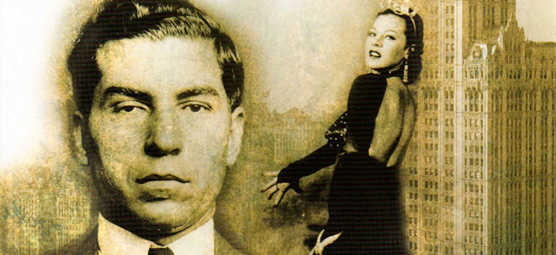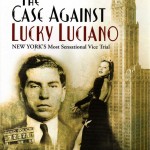Tuesday, March 4-Will Shoot on Sight

Ellen Poulsen is the author of Don’t Call Us Molls: Women of the John Dillinger Gang and The Case Against Lucky Luciano: New York’s Most Sensational Vice Trial, winner of the Silver Medal for True Crime Book Award. Poulsen will discuss The American Gun Moll from Bonnie Parker to Virginia Hill in an Author’s Talk and Book Signing set for Friday and Saturday, March 21-22, at the Museum and Bosses & Bulbs retail outlet at the Container Store.
For more information click here.
In a 1934 memo issued by the Texas field office of the FBI, the description left no doubt as to the nature of Clyde Barrow and Bonnie Parker. “Those parties are heavily armed and will shoot on sight.” They were not gangsters but desperadoes. The closest the Barrows ever got to an inner-city mobster was a gun purchase from Barker-Karpis gangster Alvin Karpis. He later wrote that they were a “bunch of Goddamn Texas screwballs.”
Last December a TV miniseries aired about Clyde and Bonnie. With a plot that ushered Bonnie’s character down the River Styx in a wanton shooting spree, it did not impress historians. While not expecting a documentary here, researchers were disappointed in her portrayal.
We know now that Bonnie Parker was not Annie Oakley. In a 1968 article that appeared in Playboy, the gang’s companion, William Daniel (W.D.) Jones, described Bonnie as someone who didn’t shoot, but who was a good loader. That has been the basis for the contention that Bonnie did not shoot to kill. There are those who see no difference between loading and shooting when murder and mayhem are the result. Yet W.D. Jones, in his interview, told people what they wanted to know about her.
In this recent production, Bonnie gleefully jumps out of her car, shoots a police officer, kicks the dying man and laughs that his head bounced “like a rubber ball.” Historians have now thrown out that version of the notorious Grapevine killings, which occurred near Grapevine, Texas, on April 1, 1934 – Easter Sunday.
Consider that an FBI. memo dated April 9, 1934, nine days after the Grapevine killings, describes Bonnie Parker this way: “Bullet wound left foot next to little toe; burn scar right leg, knee to hip.” Yet nine days earlier, if the TV rendition is to be believed, she was not a person who could no longer stand unaided due to having been badly burned in a recent car crash, and with a bullet wound in her foot. Rather, she lifted herself with no cane or crutches to exit the automobile while lifting an automatic rifle, and shot a police officer at point blank range while talking loudly enough to have been heard yards away.
This version of that tragic day’s events was challenged in 1996 with the publication of John Neal Phillips’ book, “Running with Bonnie and Clyde: The Ten Fast Years of Ralph Fults.” Bonnie, originally thought to have been alone with Clyde in the car on the day of the shooting, had been found through subsequent investigation to have been in the company of a third man, who at the approach of the officers, was standing outside the car.
A synopsis of the Grapevine killing is that the car driven by Barrow, with Henry Methvin outside the car and Parker in the back passenger seat, was parked by the side of the road. Bonnie was holding a domesticated rabbit that she had turned into an impromptu pet. Three Texas Highway motorcycle policemen came into view, with one riding away to a different location. The two officers who remained, H.D. Murphy and E.B. Wheeler, approached the car with their guns still holstered. According to an FBI memo, “Before the officers could draw their guns they were shot.”
There were eyewitness accounts by two separate sources. One came from a man later determined to have been too far away. More credible statements came from a couple who stood down the road, who maintained that two men shot the police officers, one being taller than the other. The description fit Clyde as the smaller of the two, Methvin as the taller.
The rubber ball story appears to have started after the release of the 1967 Warner Bros. Seven Arts movie. The film generated two separate lawsuits by Blanche Barrow and the family of Texas Ranger Frank Hamer. Victim and survivors counteracted the glorification of Barrow and Parker. They appeared in documentaries which spliced death car footage of the outlaws’ bodies into a mix of dramatizations. One Grapevine segment showed an actress kicking the officer’s head while mockingly comparing it to a rubber ball.
We now know more about the Grapevine killings and other episodes in the Barrow Gang saga. The debate still rages on whether Bonnie was a wanton cop killer or loader-not-a-shooter. Now she fits another category. Judging from the recent TV miniseries, she’s become a duty-free commodity being used to fit any bill.
Sources:
Jones, W.D., “Riding with Bonnie and Clyde.” New York: Playboy, November, 1968.
April 9, 1934, Colvin to File, F.B.I.; 26-4114 105. This memo listed the standing height of Clyde Barrow and Bonnie Parker incorrectly.
Knight, James R. with Jonathan Davis, Bonnie and Clyde: A Twenty-First Century Update. Austin, TX: Eakin Press, 2003.
Phillips, John Neal, Running with Bonnie and Clyde: The Ten Fast Years of Ralph Fults. Norman, OK: University of Oklahoma Press, 1996.
Karpis, Alvin with Bill Trent, The Alvin Karpis Story. New York, NY: Coward, McCann & Geoghegan, Inc., 1971.
Feedback or questions? Email blog@themobmuseum.org






